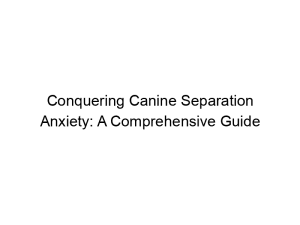Is your furry friend exhibiting unwanted behaviors? Understanding and addressing these issues is crucial for a happy and harmonious relationship. This comprehensive guide tackles 5 Common Dog Behavior Problems and How to Fix Them, providing practical solutions and insights for both novice and experienced dog owners. We’ll explore common problems, their underlying causes, and effective training techniques to help you and your dog thrive together. Learn about positive reinforcement, behavior modification, and when professional help might be necessary. You’ll leave with a clear understanding of how to improve your dog’s behavior and strengthen your bond.
Canine behavioral problems stem from various factors, including genetics, early socialization, and environmental influences. Ignoring these issues can lead to escalated problems, impacting the dog’s well-being and your relationship. Early intervention is key, and a combination of understanding, patience, and
consistent training is crucial for success.
1. Excessive Barking: A Common Canine Communication Challenge
Causes of Excessive Barking
Dogs bark for various reasons: alerting to danger, expressing excitement, boredom, anxiety, or attention-seeking. Understanding the trigger is crucial for addressing the behavior.
Addressing Excessive Barking
Training techniques involve teaching alternative behaviors (“quiet” command), desensitization (gradually exposing the dog to triggers at low intensity), and management (limiting exposure to triggers). Consistency is vital. Positive reinforcement (treats, praise) for quiet behavior strengthens the desired response.
2. Leash Pulling: Maintaining Control During Walks
Understanding Leash Pulling
Leash pulling often stems from excitement, frustration, or the dog’s natural instinct to explore. It can be both dangerous and stressful for both the dog and owner.
Techniques for Addressing Leash Pulling
Methods include using a front-clip harness (redirecting the dog’s pull), rewarding loose-leash walking, and changing the walking pace to manage excitement. Positive reinforcement is key. Training should be gradual and consistent, starting in distraction-free environments before progressing to busier areas.
3. Jumping: Managing Enthusiastic Greetings
Why Dogs Jump
Jumping is often a way for dogs to greet, express excitement, or seek attention. While seemingly harmless, it can be annoying and even dangerous.
Modifying Jumping Behavior
Teach the dog an alternative behavior (sitting or pawing) before allowing interaction. Ignore the jumping, and only reward calm behavior. Consistency is crucial. Teaching a reliable “off” command, paired with positive reinforcement, is highly effective.
4. Chewing: Dealing with Destructive Habits
Causes of Destructive Chewing
Chewing can stem from teething, boredom, anxiety, or a lack of appropriate chew toys. Identifying the underlying cause helps tailor the solution.
Preventing and Correcting Destructive Chewing
Provide plenty of appropriate chew toys. Restrict access to items the dog might chew. Manage anxiety through enrichment activities (puzzles, walks). If the chewing is stress-related, consult a veterinarian or a certified professional dog trainer.
5. Aggression: Understanding and Managing Aggressive Behavior
Types of Canine Aggression
Aggression manifests in various ways: fear-based aggression, possessive aggression, territorial aggression, and dominance aggression. Understanding the type of aggression is essential for effective intervention.
Managing Aggressive Behavior
Aggression requires professional guidance. A certified dog trainer or veterinary behaviorist can conduct a thorough assessment and develop a customized plan. This often involves behavior modification techniques, management strategies, and potentially medication.
The Role of Positive Reinforcement in Dog Training
Positive reinforcement focuses on rewarding desired behaviors. This strengthens the likelihood of repeating those behaviors. This approach builds a positive bond between you and your dog and makes training a more enjoyable experience for both of you.
The Importance of Consistency in Dog Training
Consistency is essential for effective dog training. All members of the household must follow the same rules and training methods. Inconsistent training can confuse the dog and hinder progress. Clear, consistent signals and rewards are crucial for success.
Choosing the Right Training Tools and Equipment
Appropriate training tools can significantly aid in training. Harnesses, leashes, and reward markers (clickers) can make training more effective and enjoyable. Avoid harsh training methods, as these can be counterproductive and damage your relationship with your dog.
When to Seek Professional Help for Dog Behavior Problems
If you’re struggling to manage your dog’s behavior, don’t hesitate to seek professional help. Certified dog trainers and veterinary behaviorists can provide expert guidance and create a personalized training plan. They can diagnose underlying issues and recommend appropriate interventions.
Understanding Your Dog’s Body Language
Paying attention to your dog’s body language is crucial for understanding their needs and preventing behavioral problems. Signs of stress, anxiety, or fear can indicate potential issues. Learning to interpret your dog’s signals will help you prevent and address many problems proactively.
Creating a Safe and Enriching Environment for Your Dog
A safe and stimulating environment is essential for a well-behaved dog. Provide a comfortable space for your dog, plenty of opportunities for exercise and mental stimulation (puzzle toys, training sessions), and regular socialization.
The Impact of Early Socialization on Canine Behavior
Early socialization is crucial for preventing future behavior problems. Expose your puppy to various sights, sounds, people, and other dogs in a safe and controlled manner. Proper socialization can greatly reduce the risk of fear-based aggression or anxiety later in life.
Nutrition and Exercise’s Role in Canine Behavior
A balanced diet and regular exercise are vital for your dog’s physical and mental well-being. Proper nutrition provides the necessary nutrients for optimal brain function. Exercise helps burn off excess energy and reduce stress, contributing to better behavior.
Common Mistakes to Avoid in Dog Training
Avoid harsh punishment, inconsistent training methods, and ignoring underlying medical or behavioral issues. Focus on positive reinforcement, patience, and consistency. Seeking professional help when needed is not a sign of failure but a sign of responsible pet ownership.
Utilizing Technology in Dog Training
Several apps and devices can support dog training. Apps offer training tips and reminders, while devices (e.g., smart treat dispensers) can facilitate training sessions. Such tools can be beneficial supplements to traditional methods but should never replace professional guidance.
Long-Term Strategies for Maintaining Good Canine Behavior
Maintaining good behavior requires ongoing effort. Regular training sessions, continued positive reinforcement, and consistent management are key. Regular veterinary checkups to address any potential medical issues affecting behavior are equally important.
Frequently Asked Questions
What are the most common signs of canine anxiety?
Signs of anxiety include excessive barking, panting, pacing, hiding, destructive chewing, changes in appetite, and inappropriate urination or defecation.
How can I tell if my dog’s aggression is fear-based?
Fear-based aggression often manifests as snapping, growling, or biting when the dog feels threatened or scared. They may show signs of fear before aggression, such as tucked tail, lowered ears, or whale eye.
What is the best way to socialize a puppy?
Introduce your puppy gradually to various stimuli, people, and other dogs in a safe and controlled manner. Positive experiences build confidence. Avoid overwhelming your puppy.
How often should I train my dog?
Aim for short, frequent training sessions (5-10 minutes) several times a day, rather than one long session. This helps maintain focus and prevents boredom.
My dog is constantly chewing on furniture. What can I do?
This could be due to teething, boredom, or anxiety. Provide plenty of appropriate chew toys, manage anxiety through enrichment, and consider consulting a vet or trainer if it persists.
Is it cruel to crate train a dog?
Crate training is not cruel if done correctly. It provides a safe, secure space for the dog and can be helpful in housetraining and reducing anxiety. Never use a crate as punishment.
Final Thoughts
Addressing 5 Common Dog Behavior Problems and How to Fix Them requires patience, understanding, and consistent effort. Remember that positive reinforcement, consistency, and professional guidance when necessary are key to success. By understanding the underlying causes of unwanted behaviors and employing effective training techniques, you can build a strong, positive relationship with your dog and create a harmonious home environment. Don’t be afraid to seek professional help—a certified dog trainer can provide invaluable support and guidance. Remember that training is a journey, not a destination; continued effort will yield rewarding results and a deeper bond with your beloved canine companion. Start implementing these strategies today and enjoy a more fulfilling life with your furry friend!




